For IT teams and network admins who need to resolve technical issues, getting to the root of the problem without getting in the way of other peoples’ work can be difficult. You need to figure things out before they cause issues across your network, but you can’t bring everything to a halt to do it.
To help, I’d recommend using a remote desktop software. With free, freemium, and commercial options on the market, you can remotely access another computer from your own—or even from a mobile device. This allows you to help end users experiencing issues or to work in the background while they go about their business. Plus, a tool like this can help you remotely manage your computer, storage, and network resources throughout your company—even if you have branch offices around the state, country, or globe.
Free and freemium options can be great depending on your needs—and my list goes into detail about them—but if you’re looking for truly cost-effective, premium commercial use options, I’d recommend SolarWinds Dameware Remote Support for an on-premises remote desktop solution and Dameware Remote Everywhere for cloud-based solutions. Both products provide remote support for Windows, MacOs and Linux. Each of them can be used as a mobile app on Android, iPhone, or iPad devices.
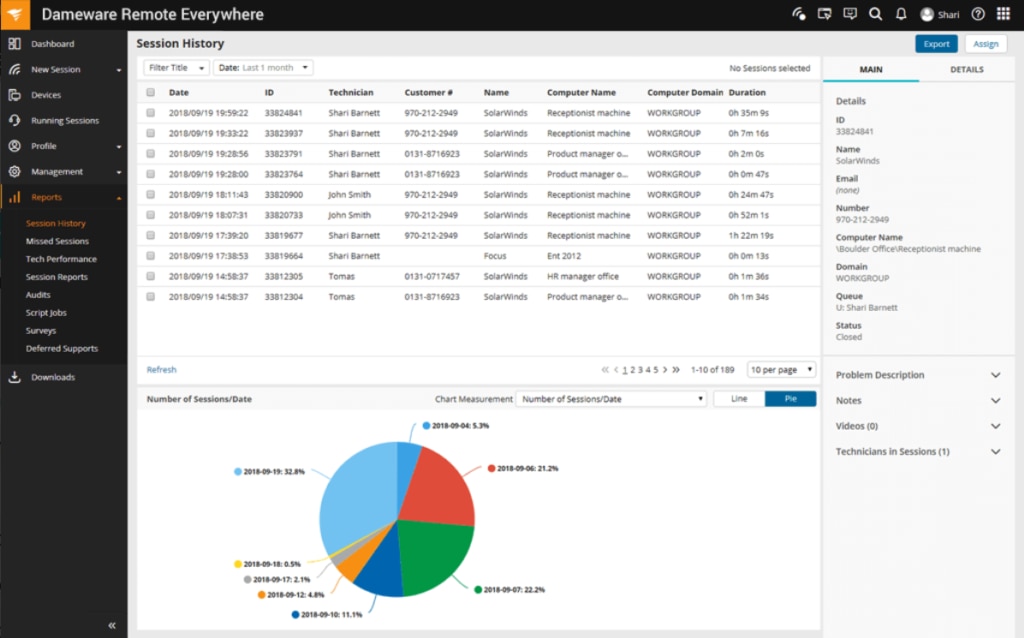
Whether you’re resolving IT issues on-site, in different buildings on-premises, or at branch offices, remote desktop software can speed up the process without bringing workflows to a halt. Here’s my pick for the best free remote desktop software.
Feel free to jump ahead to reviews:
Top Free Remote Desktop Software
New year, new offerings. Whether you’re looking for a free, freemium, or commercial remote desktop viewer, you have a lot of options at your disposal. However, I’m just going to focus on free platforms right now, so you can understand what the most entry-level options on the market look like. Like I’ve already said, these tools can give you a lot of the essentials when it comes to remote access, but they’re not going to give you absolutely everything.
Regardless, free remote desktop software can help you dip your toe into the water. This can be useful if you’re not exactly sure what your needs are or if you’d like to get familiar with some options before deciding in which commercial software you want to invest. On the other hand, these free remote desktop tools might give you everything you need, in which case the following options will be just fine. In no particular order, here’s what to consider:
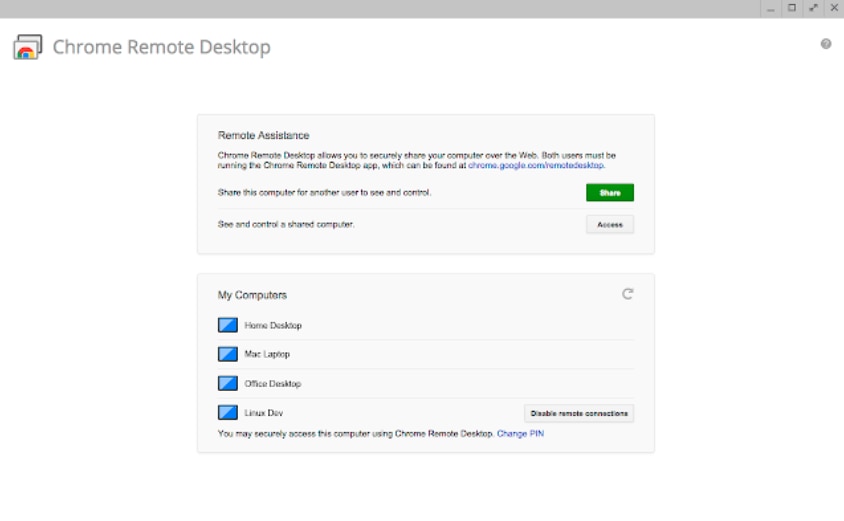
Chrome Remote Desktop is one of the more basic offerings out there for free remote desktop connections, but it gets the job done pretty conveniently. The only requirement is that both computers—that is, yours (the client) and the computer you’re remotely logging into (the host)—have Chrome installed.
This option works via an extension you install. You’ll give yourself access to the host by creating a unique PIN and you can take control of the host by logging into Chrome on the client side. As a plus, you can access the host even if Chrome isn’t running or if they’re not logged into their account. However, the functions are a bit limited. There are no chat options available in case you need to communicate quickly with someone on the other end and the platform doesn’t support file sharing at the moment, so I’d definitely call it an entry-level choice.
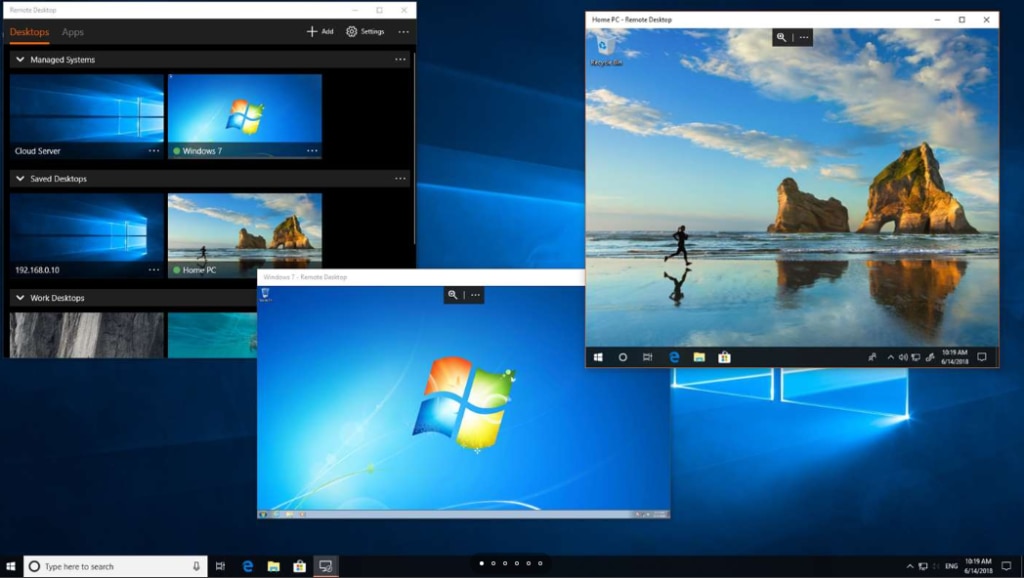
Microsoft Remote Desktop is similar to Chrome’s. It offers basic features that are convenient if you’re a certain kind of user, but it comes with a spate of limitations that might not make it the best option for everyone. With the platform—which Microsoft provides for free—you can remotely access Windows PCs from other Windows computers, mobile, devices, and Macs.
However, you should note that you can’t access a Mac from a Windows PC. With Microsoft Remote Desktop, you’ll be able to work with any version of Windows starting with Windows 7 provided they’re running Enterprise, Ultimate, or Professional. It doesn’t require authorization to connect to your own PCs, which is a plus, but it also doesn’t support file sharing or offer a wealth of options when it comes to IT assistance.
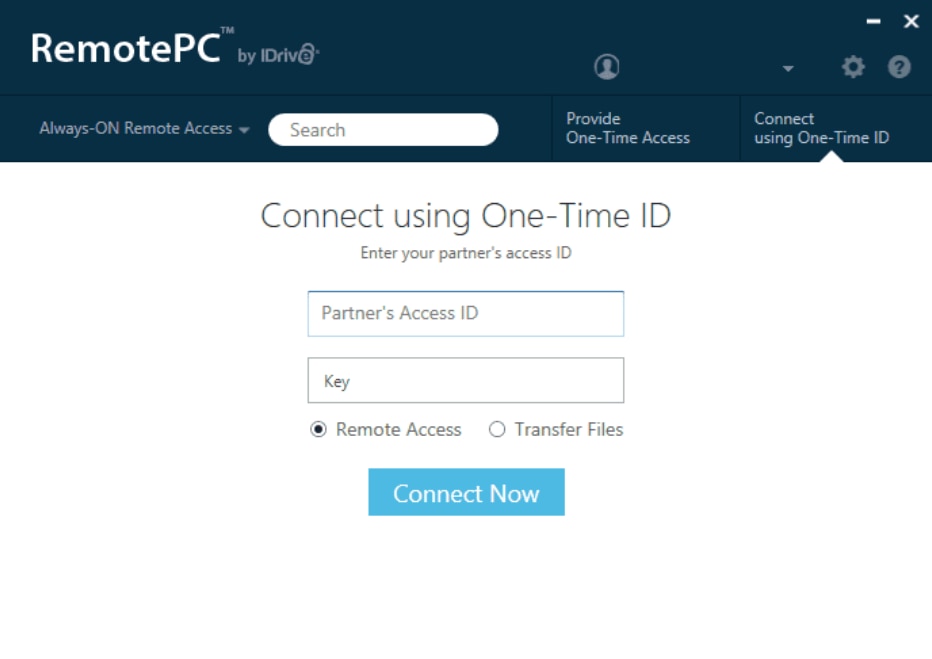
Compared with Chrome Remote Desktop and Microsoft Remote Desktop, RemotePC gives you some additional features. For example, it supports file-sharing and chat functionalities—both important things if you’re trying to work with someone remotely to solve a problem. You can also use mobile devices to access a computer, so you’re not tethered to a desktop or laptop host.
On the flip side, the biggest limitation is that you’re only able to store information for one connection at a time, unless you take advantage of their freemium options. This means that you can only have an access ID and key paired for one type of connection. You could conceivably access as many hosts as you need, but you won’t be able to store that information to toggle through.
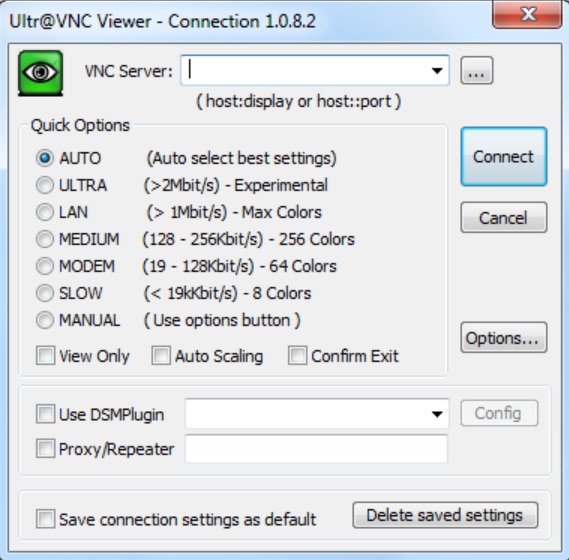
UltraVNC works by installing a server and a viewer on two different PCs. You’ll install the server on the computer you want to connect to, and the viewer on the computer you’re going to use as your controller. By installing the server as a system service, it’ll always be running and you can make connections more easily.
As far as potential snags, you’ll need to change your router settings while using UltraVNC—specifically for port forwarding. Aside from that, the platform supports file sharing and transfers, chatting between the server and the viewer, and clipboard sharing to any operating system (Linux, Windows or MacOS). Fair warning, the download page isn’t as elegant as some of these other options.
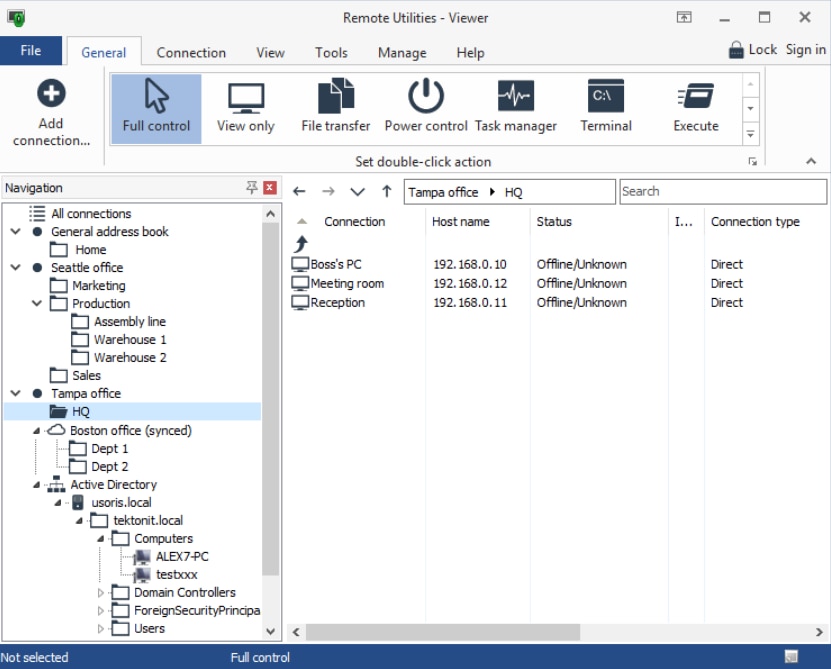
Remote Utilities gives you a competitive array of tools considering that it’s free. After pairing two computers with an Internet ID, you’ll be able to remotely access up to ten PCs. The service provides a number of tools to help with the pairing process, including a Viewer for the computer you want to use as your controller, a Host on remote computers for unattended access, a run-only Agent for spontaneous access, and an RU Server to route remote connections and access additional capabilities.
Available for personal and enterprise use, Remote Utilities has a lot of effective remote access capabilities. For example, available modules include a task manager, file transfer, power control, and text chat, just to name a few. However, the primary limitation—aside from the limit of 10 connections—is that Remote Utilities only works on Windows.
Why Remote Desktop Software?
Whatever industry you’re in, IT teams face a difficult task: how can you resolve issues with computers, storage, and networking resources without getting in the way of other important work your enterprise does? Whether you’re resolving an issue with one end user’s computer or investigating a problem affecting the organization as a whole, there’s a lot of pressure to get in, fix the problem, and get out as soon as possible.
On one hand, I can see where people are coming from. Research shows that 54% of companies experienced a downtime event lasting more than an entire workday—that’s about eight hours—in the past five years. When you consider that longer incidents can cost companies tens of thousands of dollars, if not hundreds of thousands, you can understand why it’s critical that IT professionals get to the root of whatever’s going wrong and figure things out.
On the other hand, I think it’s important to point out the barrier’s IT teams face. For instance, if an end user is having a problem that calls for your attention, you want to help them get back up to speed without putting them and their workstation out of commission for hours on end. Additionally, if someone in a branch office or a different building on your corporate campus needs assistance, it’s probably time-consuming—if not impossible—to physically be with them at their computer.
This puts IT professionals in a bind. You need to fix problems before they cause big losses for your company, but you also need to do so in a way that’s almost like you’re not even there. So how can you make this happen? Well, you probably need remote desktop software. This software can help you take over computers that have already given you permission to do so, and that includes everything: mouse, keyboard, and all.
If you’re looking for a free remote desktop software to fit these needs, you want to find the solution that works best for your team and your budget. While it’s up to you whether you go for free, freemium, or commercial products, take the time to learn more about what’s out there. To that end, I’m sharing some of my favorite free remote desktop software options with you below.
If Free Remote Support Tools Don’t Cut It
Free remote desktop software can give you some of the primary capabilities IT teams need. From portability options to chatting platforms, you can access a lot of the tools that make remote desktop software so useful in the first place. You’ll be able to take control of another computer—often whether or not somebody’s on the other end—and get to the root of the problem without disturbing their work or having to waste time actually walking to their workstation.
However, you’re going to run into some limitations depending on which software you use. For instance, a lot of free remote desktop software only allows you access to a certain number of computers at any one time. This may be all you need if you’re on a smaller team, but it’s obviously a hassle for bigger operations—and potentially a deal-breaker. Even if you fall somewhere in the middle, you’re not going to want to have multiple kinds of remote access software just so you can cover all your computers without having to pay.
When I think of remote desktop software that’s easy to install, intuitive to use, and backed up by other positive customer reviews, I have to go with SolarWinds Dameware Remote Support and Dameware Remote Everywhere. Available for on-premises and cloud-based teams, Dameware Remote Support and Dameware Remote Everywhere provide really effective tools that I depend on. It’s secure, functional 24/7, and comes with support. If I need to start a mobile session over a device, centrally manage my Dameware environment, or organize work tickets easily, these SolarWinds offerings would be the perfect fit. What’s great is that you can try out either one of these remote support solutions risk-free for 14 days to see if it meets your support needs.
Other Helpful Free Tools Lists
Top FREE Network Monitoring Tools
If your network is down or experiencing real issues, it’s hard for the rest of your organization to do what needs to get done. Whether you’ve already figured out your network architecture or you want to get it up and running in tandem with network monitoring tools, make sure that you do your research and get the options that will work best for your team.
Top FREE Server Monitoring Tools
If you and your team regularly build your own applications, safeguarding your server environment is critical. After all, those applications are probably essential, whether they’re for people inside your organization or for clients outside of it. To that end, you need server monitoring tools that can get the job done—regardless of whether you want free, freemium, or commercial options.

